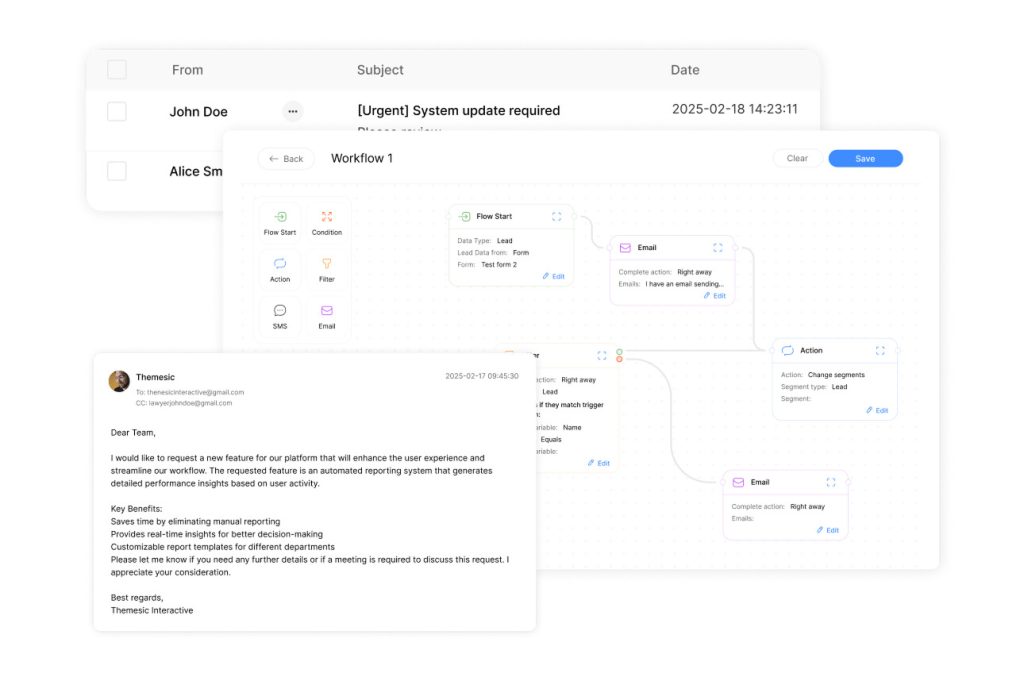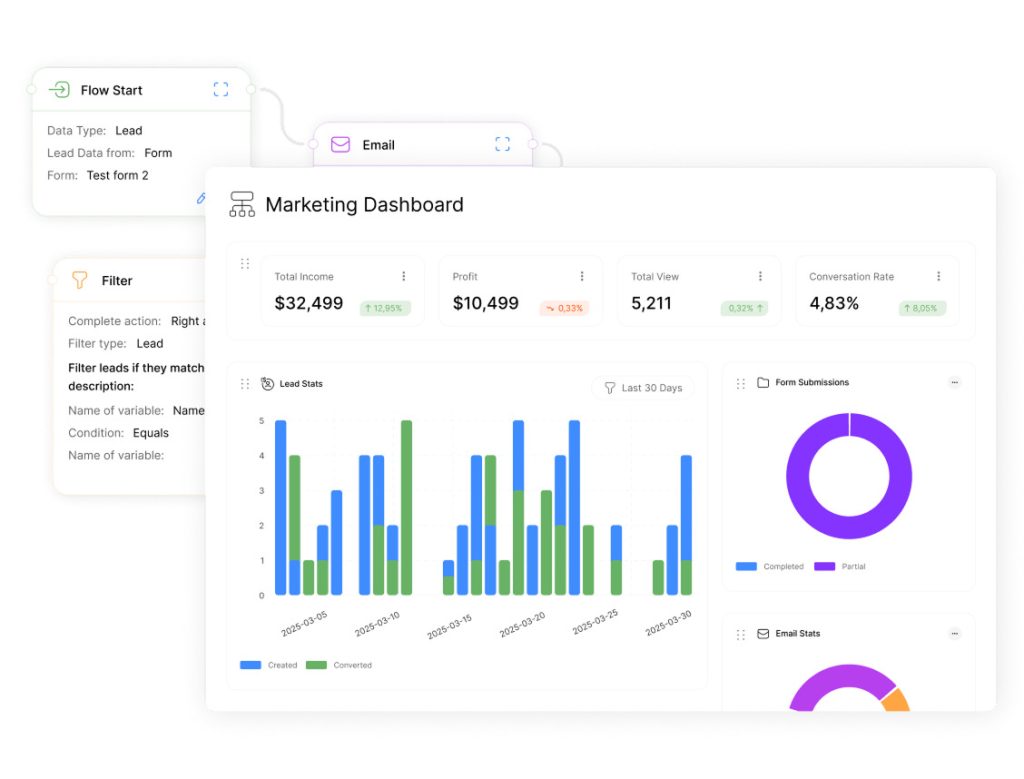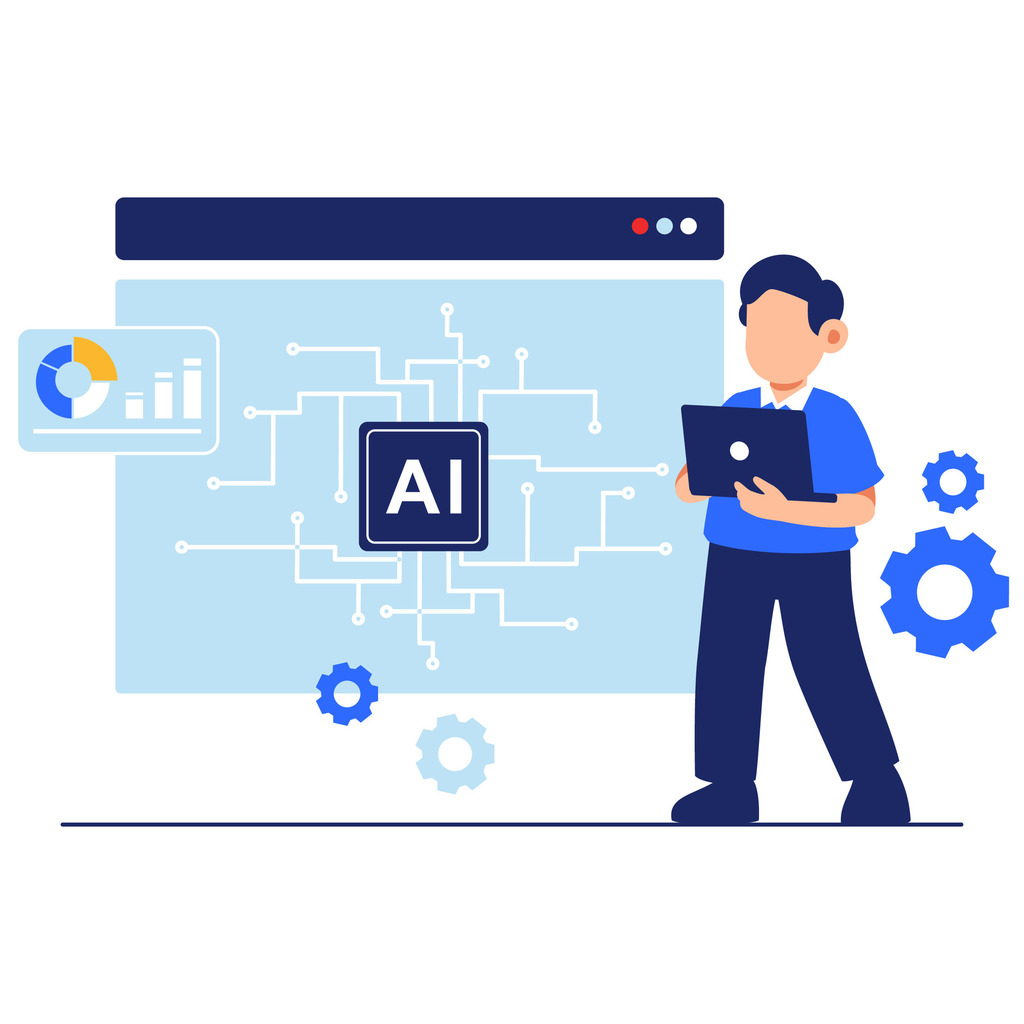Mastering Marketing Automation: The Ultimate Guide

Modern organizations face mounting pressure to deliver personalized experiences while managing complex campaigns, making marketing automation a crucial solution. Sophisticated platforms now enable teams to consolidate email, social media, and customer data into unified workflows. These systems eliminate manual tasks while optimizing engagement across every touchpoint. As businesses strive to enhance their communication strategies, tools that facilitate sms marketing product comparisons can further empower teams to make informed decisions. This analytical approach not only streamlines campaign management but also fosters deeper relationships with customers by ensuring that the right message is delivered at the right time. Ultimately, embracing these advanced marketing automation solutions is essential for staying competitive in a rapidly evolving digital landscape.
Industry reports reveal explosive growth in adoption rates, with enterprise spending surpassing $2.7 billion last year. This surge reflects growing recognition of automation’s power to boost conversion rates and strengthen customer relationships. Companies leveraging these tools effectively report 45% faster lead nurturing cycles on average.
The true value lies in creating synchronized campaigns that adapt to user behavior. By integrating with CRM systems, businesses gain real-time insights to refine messaging and predict customer needs. Decision-makers achieve measurable improvements in retention rates and operational efficiency when combining technical capabilities with smart data-driven approaches. These strategies are further enhanced by utilizing the best CRM solutions for marketing, which enable organizations to segment their audience effectively and tailor communications to specific customer profiles. By leveraging data analytics, companies can anticipate trends and personalize experiences, ultimately fostering deeper connections with their audience. This proactive approach not only drives engagement but also reinforces brand loyalty in a competitive landscape.
Success requires more than just software implementation. Organizations must align their strategy with clear objectives, audience needs, and performance metrics. Those who master this balance unlock scalable growth while maintaining the human touch that builds brand loyalty.
Key Takeaways
- Unified platforms streamline cross-channel campaigns and customer data management
- Enterprise adoption grew 30% year-over-year, exceeding $2.7B in market value
- Integrated CRM systems enable predictive personalization and behavior-based targeting
- Effective implementation reduces lead conversion time by nearly half
- Strategic alignment proves critical for maximizing ROI and customer retention
The Evolution of Marketing Automation and Its Role in Business
Advancements in AI have propelled automation beyond basic tasks, reshaping how companies engage audiences. What began as simple email schedulers now predicts buyer behavior through machine learning. McKinsey estimates generative AI could boost productivity by 15% across the $463 billion marketing sector—a shift 76% of CMOs recognize as transformative.
Artificial Intelligence and Machine Learning Advances
Modern systems analyze customer interactions to forecast purchasing patterns. Algorithms process millions of data points, adjusting campaigns instantly based on real-time feedback. This predictive power lets teams deliver hyper-personalized content at scale, from tailored offers to dynamic pricing strategies.
Natural language processing elevates communication standards. Chatbots now resolve complex inquiries while mimicking human conversation styles. These tools maintain brand voice consistency across support channels, freeing staff for high-value initiatives.
Transitioning from Manual Tasks to Automated Workflows
Companies replacing spreadsheets with intelligent platforms see immediate efficiency gains. Automated lead scoring and segmentation reduce human error while accelerating sales cycles. One study found businesses using CRM automation cut lead response times by 53%.
Repetitive tasks like data entry and report generation now occur autonomously. Teams redirect saved hours toward creative strategy and relationship-building. This shift creates a competitive edge—organizations automating 70% of routine processes report 40% higher customer retention rates.
Understanding Marketing Automation

Businesses now rely on integrated systems to manage complex customer interactions efficiently. These platforms combine critical functions into cohesive workflows that adapt to evolving needs while maintaining consistent engagement.
Core Functions and Features
Three pillars form the foundation of effective systems. Campaign management coordinates multi-channel outreach while tracking response patterns. Analytical tools assess historical data to refine offers and predict outcomes. Centralized repositories unify information from disparate sources, creating single customer views.
Key capabilities include:
- Intelligent lead scoring using engagement metrics and demographic signals
- Dynamic audience grouping based on behavioral triggers
- Cross-platform synchronization with existing CRM databases
Impact Across the Customer Journey
Automated touchpoints guide prospects from discovery to advocacy. Initial awareness-building content transitions into educational materials as interest grows. Post-purchase follow-ups reinforce loyalty through personalized check-ins.
Real-time analytics powered by marketing automation enable rapid adjustments to messaging strategies. Marketing automation helps teams identify high-value opportunities by monitoring click-through rates and conversion patterns. One study showed brands using marketing automation and these insights achieve 38% faster decision-making cycles. Furthermore, leveraging survey automation tips and tools can complement these efforts by providing valuable consumer feedback in real-time. This data can guide marketing teams in refining their strategies further, ensuring they stay aligned with customer preferences and market trends. As a result, brands can enhance their overall campaign effectiveness and foster stronger connections with their audience.
Seamless CRM integration ensures consistent experiences across all channels. Unified profiles track preferences and past interactions, allowing tailored communication at scale. This approach reduces friction during critical decision phases while nurturing long-term relationships.
Leveraging Automation Marketing Tools for Success

Leading enterprises now harness integrated platforms to orchestrate customer interactions across digital channels. These systems transform how teams execute campaigns, blending precision with scalability while maintaining brand consistency.
Email Marketing and Campaign Management
Sophisticated drip campaigns drive 3x higher click-through rates compared to generic blasts. Platforms like Salesforce Marketing Cloud and HubSpot Marketing Hub enable behavior-triggered sequences. A welcome series might deliver onboarding tips after a purchase, while abandoned cart reminders recover lost revenue.
Advanced A/B testing refines every detail. Subject lines, send times, and content layouts evolve based on real-time engagement data. One retailer boosted email revenue by 27% using dynamic product recommendations tailored to browsing history.
Social Media, Mobile, and Multichannel Integration
Centralized dashboards powered by marketing automation streamline posting schedules and audience monitoring. Marketing automation enables teams to respond to Instagram comments, LinkedIn messages, and TikTok trends without switching apps. Oracle Marketing Cloud users leveraging marketing automation report 40% faster response times to customer inquiries.
Mobile-first strategies thrive with location-based push notifications. Coffee chains send discount offers when loyal customers near stores. Fitness apps trigger workout reminders during peak activity hours. These context-aware messages achieve 63% higher open rates than static campaigns.
Unified profiles ensure seamless transitions between channels. A customer clicking a Facebook ad receives follow-up emails matching their interests. This synchronization increases conversion rates by eliminating disjointed experiences.
Developing a Comprehensive Marketing Automation Strategy
Crafting an effective marketing automation framework requires aligning technical capabilities with organizational priorities. Businesses achieve maximum impact when marketing automation systems support measurable outcomes like revenue growth and operational agility. By integrating these systems seamlessly, companies can enhance their customer engagement and streamline processes to drive efficiency. Additionally, exploring the benefits of sales workflow automation can further support the alignment of sales and marketing efforts, ultimately leading to improved performance and higher conversion rates. As businesses continue to adapt to the evolving landscape, these frameworks will be crucial in sustaining competitive advantage.
Setting Clear Objectives and Goals
Successful strategies start by defining SMART targets—specific, measurable goals tied to business growth. A SaaS company might aim to boost qualified leads by 35% within six months through optimized landing pages. Clear benchmarks enable teams to track progress and adjust tactics.
Marketing Automation for Personalization, Lead Generation, and Nurturing
Dynamic content engines transform how prospects engage with brands. Behavioral data triggers tailored email sequences addressing individual pain points. For example, e-commerce platforms send personalized product suggestions based on browsing history, increasing conversion rates by 22% on average.
Automated lead scoring routes high-potential contacts to sales teams while nurturing others with educational resources. This approach reduces missed opportunities and builds trust through consistent, value-driven communication.
Optimizing Repetitive Tasks for Efficiency
Intelligent systems handle routine operations like data synchronization and report generation. One financial services firm reclaimed 15 hours weekly by automating client onboarding workflows. These efficiencies scale with business growth—high-performing organizations process 4x more leads without proportional staffing increases. As businesses continue to seek competitive advantages, the adoption of top automation tools for businesses becomes increasingly vital. These tools not only streamline operations but also enhance data accuracy and minimize human error. Moreover, by leveraging intelligent systems, organizations can focus on strategic initiatives, fostering innovation and growth in an ever-evolving market landscape.
Key components of scalable strategies:
- Centralized dashboards monitoring campaign performance
- Adaptive workflows adjusting to seasonal demand shifts
- Integrated ROI tracking across acquisition channels
Advanced Techniques in Automation Software and Analytics

Cutting-edge platforms now analyze customer interactions and market trends with surgical precision. These systems transform raw information into actionable strategies, helping teams stay ahead of shifting demands. A 2023 Forrester study found companies using advanced analytics achieve 2.3x faster revenue growth than competitors.
Predictive Analytics and Data-Driven Decisions
Sophisticated automation software identifies patterns humans often miss. By examining historical purchase data and engagement metrics, these tools forecast which leads will convert within 30 days. One retailer boosted conversions by 41% after implementing predictive lead scoring.
“AI-driven models reduce guesswork by translating behavioral signals into concrete next steps.”
| Aspect | Traditional Approach | AI-Driven Approach |
|---|---|---|
| Lead Prioritization | Manual scoring | Behavior-based predictions |
| Content Adjustment | Monthly reviews | Real-time optimization |
| Channel Selection | Static schedules | Dynamic allocation |
Utilizing AI for Dynamic Campaign Optimization
Machine learning algorithms test thousands of campaign variations simultaneously. They adjust email send times, social media bids, and ad creatives based on live performance data. Platforms like advanced marketing solutions enable this agility while maintaining brand consistency.
Real-time dashboards highlight underperforming segments, allowing instant corrections. Teams using these features report 29% higher ROI from their campaigns. Process mining tools further enhance efficiency by mapping customer journeys to eliminate friction points.
Three critical capabilities separate leaders from laggards:
- Self-optimizing workflows that learn from each interaction
- Unified data streams connecting all customer touchpoints
- Automated A/B testing frameworks
Implementing Best Practices and Avoiding Common Pitfalls
Strategic implementation separates thriving businesses from those struggling with fragmented systems. Aligning workflows across departments creates cohesive experiences while preventing operational blind spots.
Cross-Department Collaboration and Process Visualization
Unified strategies succeed when sales, support, and operations teams share visibility into automation logic. Flowcharts mapping customer touchpoints reduce misalignment risks by 37%, according to Forrester research. Visual tools like CRM-integrated dashboards help identify handoff delays between departments.
One healthcare provider boosted appointment bookings by 22% after diagramming patient communication paths. Their workflow revealed gaps in follow-up timing, which they resolved through synchronized email and SMS triggers.
“Process maps transform abstract concepts into actionable blueprints for cross-functional teams.”
Testing, Analyzing, and Refining Workflows
Phased rollouts let businesses validate assumptions before scaling. Start with welcome email sequences, then expand to complex nurturing campaigns. A/B test elements like:
- Subject line length vs. emoji usage
- Call-to-action placement in messages
- Optimal send times per audience segment
| Approach | Success Rate | Adjustment Speed |
|---|---|---|
| Manual Testing | 62% | 48-72 hours |
| AI-Optimized | 89% | Real-time |
Continuous data monitoring spots declining engagement before revenue impacts occur. Teams using predictive analytics achieve 31% faster course corrections. Balance automation with human oversight—42% of customers still prefer live support for complex issues.
Conclusion
Businesses now operate in an era where personalized engagement and operational agility define success. Automation platforms empower teams to streamline repetitive processes while maintaining authentic customer connections. These tools transform how companies nurture leads, deliver tailored content, and analyze campaign performance.
Organizations adopting intelligent systems achieve measurable results: 53% faster response times to prospects, 40% higher retention rates, and 27% revenue growth from dynamic email strategies. The key lies in balancing data-driven precision with human oversight—42% of consumers still value personalized service for complex decisions.
Future advancements will deepen AI integration, enabling predictive adjustments to messaging and channel selection. Platforms already analyze millions of data points to optimize send times, content layouts, and audience targeting. Teams that master this balance see 2.3x faster revenue growth than competitors.
Successful implementation requires strategic planning, cross-department alignment, and continuous refinement. By combining software capabilities with customer-centric workflows, businesses unlock scalable growth while building lasting loyalty. The result? Exceptional experiences that drive conversions at every touchpoint.

